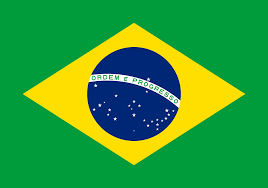RENATA LOPES KRUGER
MITACS Elevate Postdoctoral Associate, Hotchkiss Brain Institute, Physiology and Pharmacology Department, Cumming School of Medicine, University of Calgary (Canada)
09/2015 – 08/2019 – Calgary, Canada
Effects of exercise on neuromuscular fatigue during dynamic muscle contractions in young and aging populations (Principal Supervisor – Cosupervisor: Dr Pierre Samozino)

Biography

Dr. Renata Krüger obtained her PhD in the Faculty of Kinesiology at the University of Calgary under the supervision of Prof. Guillaume Millet in 2019. One of the novel aspects of her PhD research was using torque-velocity and power-velocity relationships obtained during cycling sprints to assess dynamic measures of fatigue. Due to the originality of her study, she was nominated as a finalist in the “Graduate Student Award Competition” organized by the Canadian Society for Exercise Physiology in 2017. Additionally, she received the “International Research Excellence Award,” which supported one of her research projects conducted under the supervision of Dr. Pierre Samozino in France in 2018.
From 2019 to 2021, Renata held a postdoctoral fellowship position in the Cumming School of Medicine at the University of Calgary, where she studied the effect of exercise on the aging brain. During her academic career, she published 30 articles and was sponsored by ten different scholarships/fellowships, including MITACS Elevate and CIHR postdoctoral fellowships.
Renata transitioned from academia to industry in 2021 to work as a Research Manager & Lead Medical Writer in a company that contributes to clinical psychedelic research while delivering therapeutic protocols. She also works part-time for MITACS as a research review coordinator.
Main results of the work we have done together
- Neuromuscular fatigue induced by dynamic tasks is determined by exercise intensity and duration. While severe-intensity exercises induce more peripheral fatigue, fatigue after moderate-intensity exercise is associated with peripheral and central alterations.
- Isometric force recovers from 10 s to 2 min after high-intensity exercise. Previous studies that have investigated neuromuscular fatigue with a delay of 2-3 min might have misinterpreted fatigue amplitude and etiology as well as the course of recovery.
- Isometric and dynamic measures of fatigue are differently affected after a given exercise, and the pattern of recovery for these measures is also different. We showed that maximal power output decreased more than maximal isometric force after the Wingate (-42 vs -19%), whereas maximal isometric force was more reduced than maximal power output after the 10-min (-38 vs -26%) and the 90-min (-27 vs -6%) tasks.
- The assessment of fatigue (isometric force vs power) must be considered when identifying age-related neuromuscular fatigue mechanisms.
- Age-related fatigue and recovery depend on the fatiguing exercise intensity and duration and the fatigue assessment mode. Young males are as fatigable—for a Wingate and moderate-intensity exercises—or more fatigable—for severe-intensity exercise—than older participants. The inferred mechanism responsible for the greater fatigability response in young individuals is a greater metabolite accumulation.
- Neuromuscular fatigue recovery in young males may be, at least partially, limited by factors related to the prolongation of muscle relaxation time after a supramaximal exercise.
Main publications associated with this work
Renata L Krüger, Peyrard A, di Domenico H, Rupp T, Millet GY, Samozino P. Optimal Load for a Force-Velocity Relationship Test During Cycling. European Journal of Applied Physiology (EJAP-D-20-00297). Status: minor revision.
Renata L Krüger, Saied Jalal Aboodarda, Libia Marcela Jaimes, Marco A Vaz, Pierre Samozino, Guillaume Y Millet. Age-Related Neuromuscular Fatigue and Recovery after Cycling: Measurements in Isometric and Dynamic Modes. Experimental Gerontology. 2020 May.
Renata L Krüger, Saied Jalal Aboodarda, Libia Marcela Jaimes, Pierre Samozino, Guillaume Y Millet . Cycling Exercises Performed at Different Intensities-Durations in Men: Neuromuscular Fatigue and Recovery Kinetics Revisited. Applied Physiology. Applied Physiology, Nutrition, and Metabolism. 2019 December.
Renata L Krüger, Saied Jalal Aboodarda, Libia Marcela Jaimes, Brian R MacIntosh, Pierre Samozino, Guillaume Y Millet. Fatigue and Recovery Measured with Dynamic Properties vs Isometric Force: Effects of Exercise Intensity. The Journal of Experimental Biology. 2019 May 9.
Renata L Krüger, Saied Jalal Aboodarda, Pierre Samozino, Charles L Rice, Guillaume Y Millet. Isometric versus Dynamic Measurements of Fatigue: Does Age Matter? A Meta-Analysis. Medicine and Science in Sports and Exercise. 2018 October.
